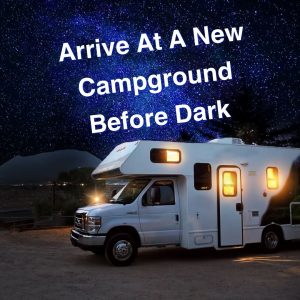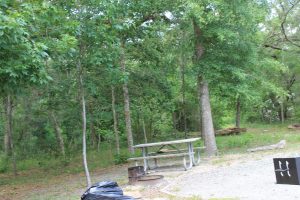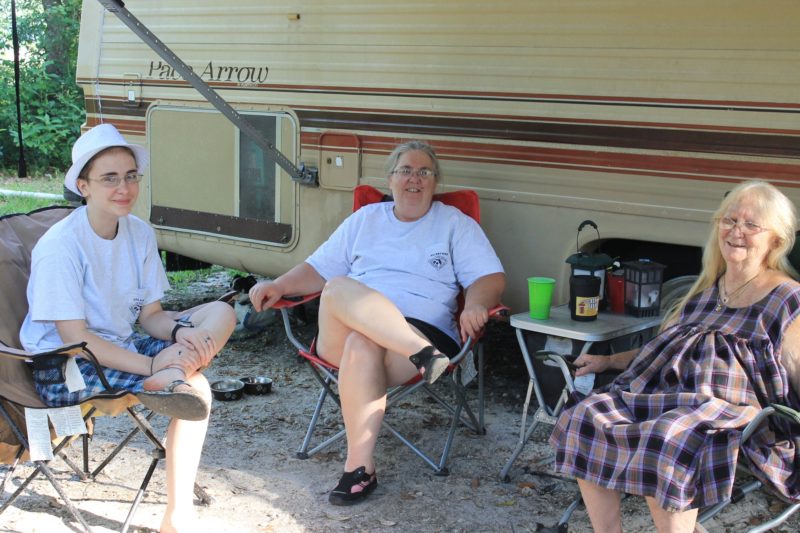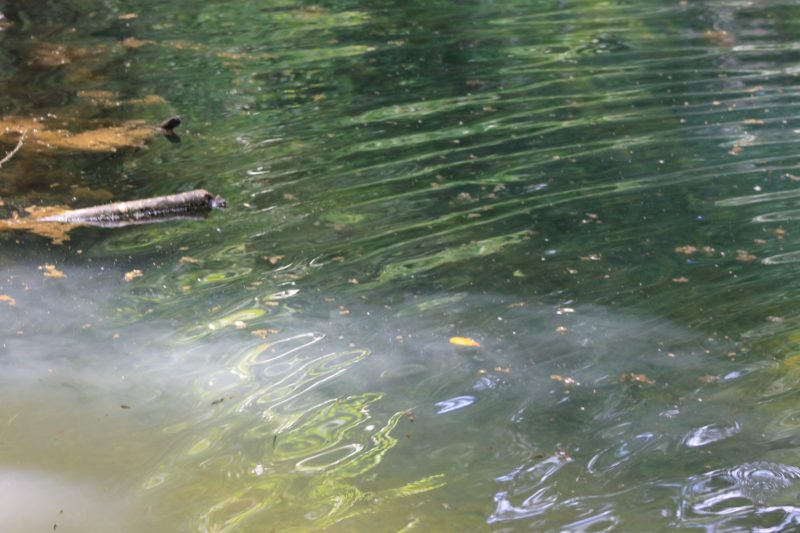Finding Your Spot: Practical Advice for Women RVers on Finding and Setting Up Camp in the Dark
Are you a fearless female RVer ready to conquer the open road, but feeling a little nervous about finding and setting up camp after dark? Don’t worry, we’ve got you covered! In this blog post, we’ll share practical advice and tips for women RVers on navigating the challenges of late-night camping. So grab your flashlight and let’s light up the night together!
Introduction: The increasing number of women embracing the RV lifestyle
In recent years, there has been a significant increase in the number of women who are embracing the RV lifestyle. More and more women are choosing to hit the road and travel in their own recreational vehicles, either solo or with friends and family. This trend is not surprising as RVing offers a sense of freedom, independence, and adventure that many women seek.
According to a 2020 survey by the RV Industry Association, around 1 million female travelers identified themselves as full-time RVers in the United States alone. This number has been steadily increasing over the years, with an estimated 20% increase from 2016 to 2020. These numbers show that more and more women are becoming interested in living life on wheels.
So why are so many women choosing to embrace this lifestyle? One reason could be that it allows them to break free from traditional societal norms. In today’s world, where gender roles are continually evolving, more women are seeking alternative ways of living rather than conforming to traditional expectations of staying at home or working in a corporate environment.
Furthermore, for single women or those whose partners may not share their interest in traveling and exploring new places, RVing provides a safe and comfortable way to venture out on their own terms. It’s also an excellent opportunity for bonding with other like-minded individuals through community events and gatherings at various campgrounds.
The rise of social media platforms has also played a significant role in promoting this lifestyle among women. With popular hashtags such as #RVLife #SoloTraveler #WomenWhoExplore gaining momentum on Instagram and other platforms, more and more women are being inspired by others’ stories and experiences on the road. Check out the Camping for Women website
Moreover, advances in technology have made it easier for modern-day female travelers to stay connected while on the road. With reliable internet connections available at most campsites across the country, remote work has become a viable option for many women, making it easier to sustain the RV lifestyle.
The increasing number of women embracing the RV lifestyle is not just a passing trend. It’s a movement that is here to stay. As more and more women choose to hit the road and explore new horizons, they are also challenging traditional norms and inspiring others to do the same. So if you’re a woman considering embarking on an RV journey, know that you’re not alone, and there is a growing community of female RVers out there ready to welcome you with open arms.
The challenges of arriving at a new campsite after dark for women RVers
Arriving at a new campsite after dark can be a challenging experience for any RVer, but it can be even more daunting for women traveling alone. As with any type of travel, safety should always be a top priority. However, there are also practical challenges that come with setting up camp in the dark that may not be as obvious to those who have never experienced it before.
One of the main challenges for women RVers arriving at a new campsite after dark is simply finding the site itself. Navigating unfamiliar roads and campground layouts can be difficult enough in daylight, but add in the darkness and it becomes an entirely different task. It’s important to plan ahead and have detailed directions or a GPS system to guide you to your destination. If possible, try to arrive at your campsite before nightfall so you can familiarize yourself with the area and find your spot more easily.
Once you’ve located your site, another challenge arises – setting up camp in the dark. This includes leveling your RV, hooking up utilities such as water and electricity, and putting out slides if applicable. Doing these tasks in limited visibility can be frustrating and time-consuming. It’s helpful to have a flashlight or headlamp on hand to provide extra light while you work.
Safety is also a major concern when arriving at a new campsite after dark for women RVers. It’s important to stay aware of your surroundings and trust your instincts if something doesn’t feel right. Park in well-lit areas if possible, lock all doors and windows of your RV, and keep valuable items out of sight.
Another challenge that women RVers face when setting up camp in the dark is feeling vulnerable or isolated. Being surrounded by darkness without any other nearby campers or assistance can make some individuals feel uneasy or anxious. In this situation, it’s helpful to have someone else there with you for support or consider staying at a campground with 24-hour staff or security.
In addition to practical and safety challenges, arriving at a new campsite after dark can also be mentally and physically exhausting. Driving for long hours and then having to set up camp in the dark can take a toll on one’s energy levels. It’s important to listen to your body and not push yourself too hard. Take breaks, stay hydrated, and ask for help if needed.
Arriving at a new campsite after dark poses unique challenges for women RVers. By planning ahead, staying aware of surroundings, and taking necessary precautions, this experience can be made smoother and more manageable. Remember to trust yourself, take care of your safety first, and don’t be afraid to ask for assistance when needed. With these tips in mind, you can confidently set up camp in the dark as a woman RVer.
Preparing for a nighttime arrival: Tips for planning ahead and staying safe
Arriving at a campsite after dark can be a daunting task, especially for women RVers. However, with some careful planning and preparation, it can be a smooth and safe experience. Here are some tips for preparing for a nighttime arrival at your campsite.
1. Plan Your Route in Advance: Before hitting the road, make sure to plan your route to the campsite carefully. Use GPS or map out your trip beforehand so you know exactly where you’re going. This will help avoid any potential wrong turns or detours that could cause delays and increase the chances of arriving after dark.
2. Pack Essential Gear: It’s important to pack essential gear that will come in handy during a nighttime arrival. A flashlight or headlamp is crucial for navigating through the campground and setting up camp in the dark. Also, consider bringing along reflective vests or tape to make yourself more visible to other campers.
3. Reserve Your Campsite Ahead of Time: If possible, try to book your campsite ahead of time so you know exactly where you’ll be staying for the night. This will save you time and stress when trying to find an available spot in the dark.
4. Check In with Campground Staff: When you arrive at the campground, it’s always a good idea to check-in with the staff before heading to your site. They can provide helpful information about any potential hazards on the grounds and assist with directing you towards your designated spot.
5. Scout Out Your Site: Once you’ve arrived at your campsite, take some time to scout out the area before setting up camp in the dark. Look for any uneven terrain or potential obstacles that could pose a safety hazard when maneuvering around with limited visibility.
6.Drive Slowly and Carefully: When driving through campsites after dark, it’s important to drive slowly and carefully while keeping an eye out for other vehicles, pedestrians, wildlife, or any other potential hazards. Use your high beams when possible to increase visibility, but make sure to switch them off when approaching other campers.
7. Have a Plan B: No matter how well you plan, sometimes things don’t go as expected. In case of an emergency or an unexpected issue with your designated site, it’s always good to have a backup plan in place. Research nearby campsites or have a list of alternative options ready beforehand.
With these tips in mind, preparing for a nighttime arrival at your campsite can be much less stressful and more enjoyable. Remember to stay alert and use caution while setting up camp in the dark, and don’t hesitate to ask for assistance if needed. Happy camping!
Setting up camp in the dark: Step-by-step guide on how to navigate and set up camp in low-light conditions
Setting up camp in the dark can be a daunting task, but with the right preparation and mindset, it can also be an exciting adventure. Whether you are arriving late at your campsite or prefer to travel during the night, having a step-by-step guide on how to navigate and set up camp in low-light conditions can make all the difference.
Step 1: Choose Your Campsite Wisely
When setting up camp in the dark, finding a suitable spot is crucial. Look for a well-lit area that is relatively flat and free of obstacles such as rocks or tree roots. It is also essential to consider nearby amenities such as bathrooms or water sources for convenience.
Step 2: Use Headlamps or Flashlights
Having adequate lighting is essential when setting up camp in the dark. Headlamps provide hands-free lighting, making them ideal for tasks such as pitching tents or gathering firewood. If using flashlights, try to have one for each person assisting with setup to avoid sharing and ensure maximum visibility.
Step 3: Unpack Strategically
Before unpacking everything from your RV, plan what items will need immediate access and pack them accordingly. This could include essentials like cooking supplies, toiletries, or bedding. Keeping these items easily accessible will save time and effort during setup.
Step 4: Set Up Your Tent First
The tent should be your top priority when setting up camp in low-light conditions. Begin by laying out the groundsheet followed by assembling the poles and attaching them to their respective corners before securing it with stakes. Once erected, use headlamps or flashlights inside to make sure everything is functioning correctly before adding any bedding.
Step 5: Utilize Glow Sticks
Glow sticks are an excellent way to mark pathways around your campsite after sunset. Place them along trails leading from your RV to other areas such as bathrooms or picnic tables for easy navigation in the dark.
Step 6: Build a Fire
A campfire is not only a great source of warmth and light but also adds to the camping experience. Use dry kindling and pre-cut logs for quick setup. Remember to always extinguish the fire before going to bed or leaving your campsite.
Step 7: Don’t Forget About Safety
Safety should be a top priority when setting up camp in low-light conditions. Make sure to have a first aid kit easily accessible and keep an eye out for any potential hazards such as uneven terrain or loose branches.
Setting up camp in the dark may seem like a challenging task, but with these step-by-step guidelines, it can be an enjoyable and memorable experience. Remember to stay organized, use adequate lighting, and prioritize safety when navigating and setting up camp in low-light conditions. Happy camping!
Essential gear and tools for setting up camp at night: Flashlights, headlamps, and other must-haves
When it comes to setting up camp at night, having the right gear and tools can make all the difference. As a woman RVer, it’s important to have a well-stocked arsenal of essential items that will help you navigate and set up camp in the dark safely and efficiently.
Flashlights are a must-have for any camping trip, but even more so when setting up camp at night. They provide a powerful beam of light that can illuminate your surroundings and help you find your way around. When choosing a flashlight, be sure to opt for one with high lumens (at least 100), as this will provide brighter and longer-lasting light. Additionally, consider investing in a waterproof or water-resistant option in case of unexpected rain or other weather conditions.
Headlamps are another essential tool for setting up camp at night. Unlike flashlights, headlamps allow you to have both hands free while still providing ample lighting. This is especially useful when trying to complete tasks such as pitching tents or gathering firewood. For added convenience, look for headlamps with adjustable straps and multiple lighting modes (such as dimming or strobe).
In addition to flashlights and headlamps, other must-haves should be included in your pack when setting up camp at night:
- Extra batteries: It’s always better to be safe than sorry, so don’t forget to pack extra batteries for all your lighting devices.
- Glow sticks: These inexpensive items can come in handy as markers around your campsite or even as emergency signals.
- Lanterns: While not necessary, lanterns can provide ambient light around your campsite and make activities like cooking easier.
- Reflective gear: Make sure you have some reflective gear on hand (such as vests or tape) to increase visibility if you need to walk around outside your RV after dark.
- Multi-tool: A multi-tool is always handy for various tasks, especially in the dark when you may not have access to other tools.
- First aid kit: Accidents can happen at any time, so be prepared with a well-stocked first aid kit that includes extra bandages and flashlights.
It’s also important to familiarize yourself with how to use all your gear before heading out on your trip. Practice setting up your tent or using your headlamp in the dark so that you can quickly and confidently set up camp when the time comes.
Having the right gear and tools for setting up camp at night is essential for women RVers. Be sure to pack a combination of flashlights, headlamps, and other necessary items to make your camping experience safe and enjoyable. By being prepared and staying organized, you’ll be able to easily navigate through the darkness and create a comfortable home away from home under the stars.
Safety precautions
Safety is always a top priority, especially when traveling and setting up camp in the dark. As a woman RVer, it is important to take extra precautions to ensure your safety and security while on the road. Here are some practical tips to keep in mind for finding and setting up camp in the dark.
1. Plan ahead: Before embarking on your journey, make sure to plan your route and have a general idea of where you will be staying for the night. This will give you peace of mind knowing that you have a destination in mind and won’t be driving aimlessly in the dark.
2. Choose well-lit campsites: When searching for a place to park your RV, look for well-lit campsites with ample lighting around common areas such as bathrooms or communal spaces. This will not only make it easier for you to set up camp but also deter any potential intruders.
3. Park strategically: When parking at your designated spot, try to position your RV near other campers or close to the main office if possible. This visibility can act as an added layer of security and make it easier for others to come to your aid if needed.
4. Keep emergency supplies handy: Always keep an emergency kit within reach that includes items such as flashlights, first-aid supplies, and contact information for roadside assistance or local authorities.
5. Stay vigilant: As tempting as it may be after a long day of driving, avoid falling asleep immediately upon arrival at your campsite. Take some time to assess the area around you and keep an eye out for any suspicious activity or unfamiliar vehicles.
6. Lock up: It goes without saying but always lock all doors and windows before turning in for the night. If possible, install motion-sensor lights outside of your RV to alert you of any movement during the night.
7.Ask permission from other campers before using their fire pit : While campfires can be a great way to relax and unwind, it is important to ask for permission from other campers before using their fire pit. This not only shows respect for others’ personal space but also avoids any potential accidents.
8. Trust your instincts: As a woman traveling alone, it is essential to trust your gut feeling. If something or someone makes you feel uncomfortable, do not hesitate to leave the area or seek assistance from campground staff.
By following these safety precautions, you can have a worry-free and enjoyable experience while finding and setting up camp in the dark as a woman RVer. Remember to always prioritize your safety and make informed decisions when on the road.
One of Our Camping Experiences
We had only been traveling for two months and promised our family we would be around for the holidays. That means we had to traverse across the entire top part of Florida. This was quite a change from our previous travels as we tried to keep the travel time between parks not more than one or two hours at a time. Driving from Blackwater River State Park in Holt, Florida to Mike Roess Goldhead Branch State Park in Keystone Heights, Florida was extremely tiring. We don’t recommend it for beginners. Now, all the seasoned RV travelers that come to Florida every year from Canada and other parts North may sneer at our pitiful complaints, but hey, this was our first time. Anyway, we ended up leaving around noon, stopping every 2 hours for a break, and finally arriving at Goldhead well after dark. We hate arriving at a new place after dark.
Between my aching back, sore rump, and driving down some pretty spooky back roads to get to the park we were pretty grouchy with each other. To top it off our site was not as clearly marked as it could have been. We were driving up and down the road trying to figure out exactly where we were supposed to park. It was after 9:00 pm, pitch dark, and finally, I stopped the RV, got out a flashlight, and walked down the road until I found our site marker. Katie was not being very helpful, being a snarly teenager, and my mom who could not see too well in the dark. To add insult to injury the site has some low-hanging branches so I end up scraping the top of the RV trying to park correctly to hook up the service.
Please Like, Share, Comment and Subscribe to our Newsletter.
We would also love to feature women RVers in our blog. If you would like to share a story or two then please get in touch using our CONTACT Form. Of course, you can also support this blog by purchasing some items from our online store – CLICK HERE!






You must be logged in to post a comment.